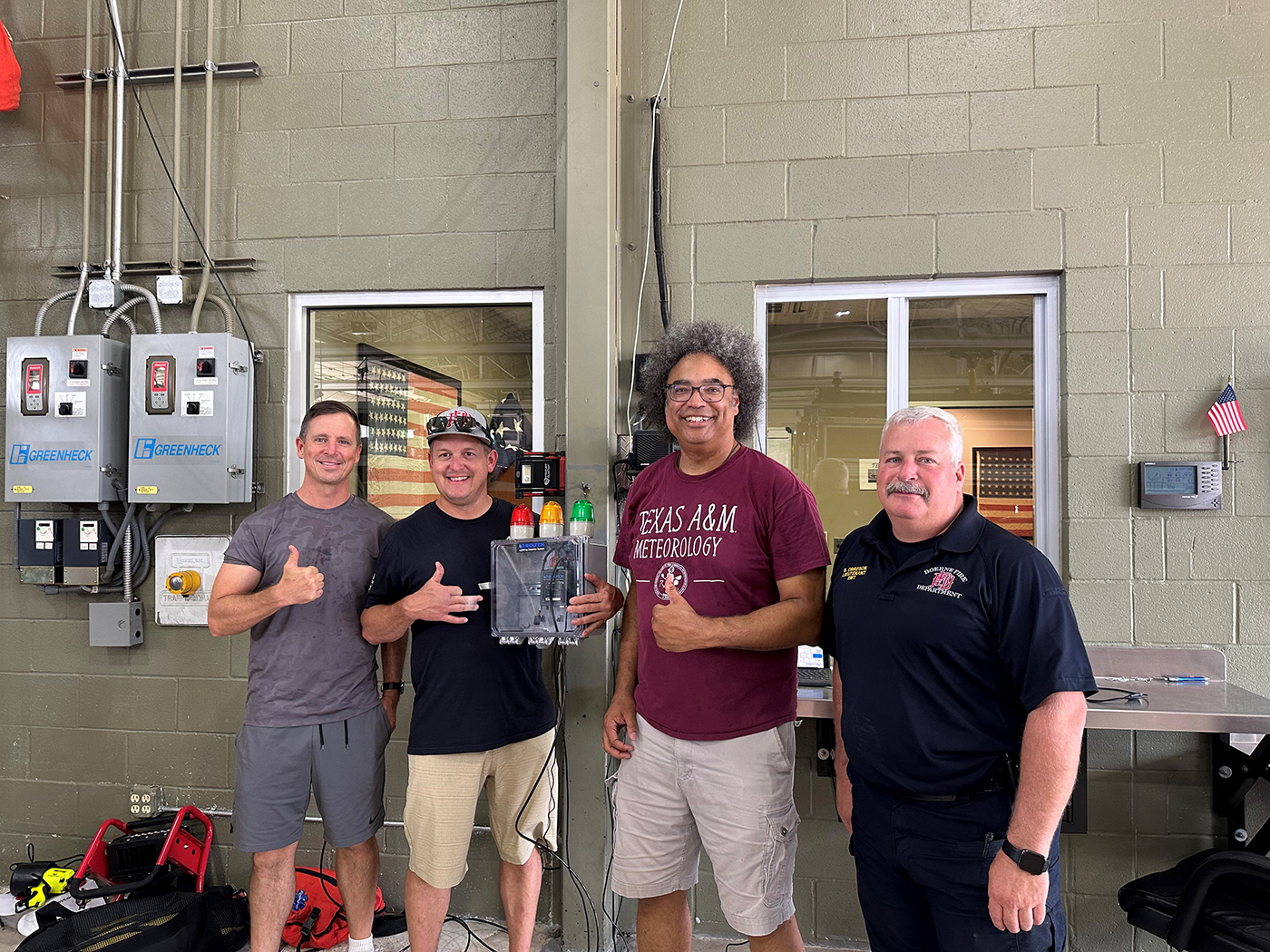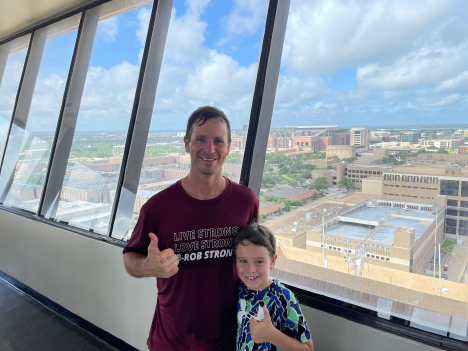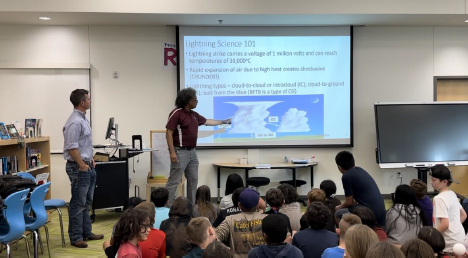
Twenty-nine years ago, I was a freshly enrolled meteorology student at Texas A&M University, fascinated by weather and earth science. I quickly discovered that I was neither mature enough nor up to the task of the early morning engineering mathematics and physics lectures. After some hard knocks, I found my passion in business and finance, earning my bachelor's degree in marketing in 1998, but the weather bug never has left my blood. In 2012, I became a Skywarn Weather Spotter, and during the 2020 pandemic, I considered taking night classes for meteorology.
In July 2021, I was attending a Texas A&M baseball camp with my then-eight-year-old son, Samuel. While on a morning run across campus, with Samuel on his bike following me, we had a timely encounter with Texas A&M’s Dr. Timothy Logan.

As we stopped to look at the famous Eller Oceanography and Meteorology (O&M) Building on campus at Texas A&M, I explained to my son that it was unfortunately closed, being a Saturday. The Eller O&M Building is an icon at Texas A&M, being the tallest building on campus — one complete with 360-degree views for weather observation.
About that time, Logan — who I now refer to as my friend Tim — walked past us, and we noticed his bright maroon Texas A&M Meteorology shirt. Logan, who is an assistant professor in the Department of Atmospheric Sciences and the director of the Houston Lightning Mapping Array (HLMA) Network, and I exchanged pleasantries, and I explained that I used to be a student in the department three decades ago.
“Would you like to come up and see the tower?” Logan asked.
From there, Samuel and I joined Logan on a half-hour tour, learning about all the specialized work that he has been doing on lightning research — specifically, work in the field of correlation of precipitation rates to lightning strikes. I explained my passion for weather and safety and how our athletic fields back home in Boerne do not have lightning warning systems. While the city’s athletic fields have lightning protocols for safety, we do not have sophisticated equipment nor the technology that may help us during a fast-moving storm with lightning.

Being a Little League coach, I know all too well the drama that can ensue when a game is cancelled due to the tight safety margin from lightning. Additionally, we are aware of “bolts from the blue,” a type of positively charged lightning that many times can be fatal to humans.
Before we concluded our visit, Logan and I discussed the potential for a mutually beneficial relationship. He shared with me his interest in collecting data from the Hill Country of Texas while also establishing a conversation with the city of Boerne about the potential to plant lightning detection sensors within city limits. We agreed to stay in contact and left shaking hands with a customary “Gig 'em, Aggies!”
Fast forward to the spring of 2023: With an active severe storm season present in Texas and El Niño expected, we successfully followed through on the progress we discussed in our previous conversation. After consulting with the Boerne Fire Department, where I volunteer, I helped coordinate a meeting with Logan, where he explained the benefits and importance of detection equipment for forensics (post-strike), warnings (pre-strike) and general safety and public education. In attendance from the city of Boerne was our county sheriff, fire marshall, a group of firefighters, EMS director and a few city officials. Logan gave us an overview of how the lightning detection system works and a presentation on its potential use. Afterward, we made our way to local Fabra Elementary School, where we discussed lightning safety with a fifth-grade class at the school.


As a result of that fateful encounter at the O&M Building in 2021, a Boltek Electric Field Sensor, donated by Logan, has gone into place in the city of Boerne. Logan has two additional units being installed, one atop the O&M Building and another in College Station that soon will assist The Woodlands Fire Department after having been at the Storm Peak Laboratory in Colorado. The system will be tested for public safety use by the Boerne Fire Department during the next 12 months while also being used for forensic reports of strikes when necessary, on a case-by-case basis.
Staying connected to weather and Texas A&M is a passion of mine, along with public safety. On behalf of the city of Boerne, we are appreciative and feel blessed to have this opportunity to foster a greater relationship with Logan, his research and Texas A&M Meteorology in general. We believe this collaboration will lead to greater levels of awareness and public safety in the present and in the future, and we all have a serendipitous encounter one summer day at Texas A&M to thank.
This first-person account by Sam McGee '98 appears courtesy of McGee, the city of Boerne, Texas, and the Boerne Fire Department.

